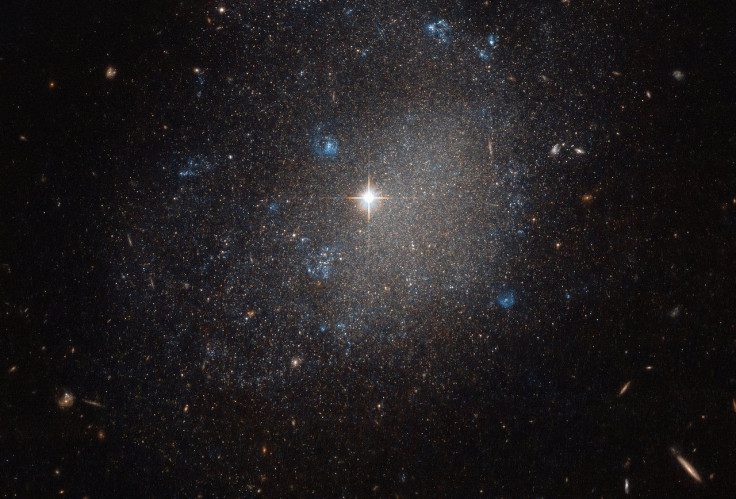Hubble Space Telescope Photographs NGC 4707 — A Spiral Galaxy 22 Million Light-Years From Earth

Astronomers using the Hubble Space Telescope have captured a stunning new image of the spiral galaxy NGC 4707, located 22 million light-years from Earth in the constellation Canes Venatici — Latin for “hunting dogs.” The image, captured using Hubble’s Advanced Camera for Surveys (ACS), reveals, in unprecedented detail, the galaxy first observed by the British-German astronomer William Herschel in 1789.
“Herschel himself reportedly described NGC 4707 as a ‘small, stellar’ galaxy; while it is classified as a spiral, its overall shape, center, and spiral arms are very loose and undefined, and its central bulge is either very small or non-existent,” the European Space Agency said in a statement accompanying the image. “It instead appears as a rough sprinkling of stars and bright flashes of blue on a dark canvas.”
The image also reveals several blue, smoke-ring like smudges scattered throughout the galaxy. Scientists believe these regions are where star formation either ceased only recently, or is still ongoing. The blue stars are bright, hot and massive stars that have formed relatively recently, whereas the redder stars are much older.
The Hubble Space Telescope was launched aboard NASA’s space shuttle Discovery on April 24, 1990. Since then, it has not only captured photos of an unimaginable number of truly spectacular nebulae and galaxies, it has also peered back over 13 billion years to look at our cosmos in its infancy, giving us, as NASA aptly put in an earlier statement, “a front row seat to the awe inspiring universe we live in.
Most recently, the telescope snapped an image of NGC 248 — two hydrogen-rich nebulae located so close to each other that they are referred to by one collective name. The glowing red appearance of NGC 248 — located roughly 200,000 light-years from Earth in the Small Magellanic Cloud — seen in the image is most likely the result of intense radiation of its central stars heating up hydrogen in their surroundings.
© Copyright IBTimes 2025. All rights reserved.





















